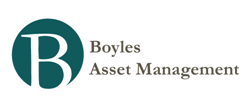Money and Finance
- Problem Solving: Complexity, History, Sustainability - By Joseph Tainter
Sustainability or collapse follow from the success or failure of problem-solving institutions. The factors that lead to long-term success or failure in problem solving have received little attention, so that this fundamental activity is poorly understood....
- Fairholme Fund: 2009 Semi-annual Report
We were able to outperform in the past six months as well as in the trailing one- , three- , and five-year periods because our policy is always to keep adequate cash on hand. Cash is defensive when the market goes into a tailspin. Cash also allows us...
- The Danger Of Having An Absolute Dividend Yield Target
I think it is possible to deliver a 4 per cent yield and to deliver dividend growth, going forward, but as I say, you must never allow an income target to dictate what you own. - Neil Woodford (UK fund manager) In this low interest rate era, the demand...
- How To Find A Good Dividend Growth Stock - Part 2
Last week, we set up a simple stock screen with an objective of "Identifying quality dividend-paying small- to mid-cap companies with sustainable competitive advantages and the potential for 7%+ annual dividend growth over the next 7-10 years." We...
- Portfolio Review With The 5+5 Rule
One of the main metrics in the Snowball Portfolio is the 5+5 rule, which I learned from Daniel Peris' excellent book - Strategic Dividend Investor (side note- Peris can write and is a man who really loves his dividends). Like most useful...
Money and Finance
Claire Barnes' Q3 letter: Overcomplexity to dysfunctionality
The Apollo Asia Fund's NAV fell 0.8% in the third quarter, to US$1,896.80. Over the last twelve months it was up 9.3%.
Despite a 5% retreat in NAV from the peak in May, the estimated current-year PE of the fund at the end of September was 15.6, still relatively high by the fund's own historical standards. Moreover, some of the high-quality, cash-generative consumer stocks which have stood us in good stead in the past are now priced for ongoing high growth which we doubt they will be able to deliver, and many of the stocks less highly rated are discounted for good reason. Stock selection currently seems quite challenging.
Moreover, a growing proportion of our attention goes to monitoring (and trimming) our existing holdings, many of which seem to be finding their own businesses equally challenging.
Our report in July 2011 discussed bureaucracy and overcomplexity, highlighting this graphic illustrating an issue which appears more and more relevant. The complexity of simple tasks and services seems to be growing apace. More and more detailed regulation is crowding out useful activity. More and more professional people seem to be swamped - and to have less and less time remaining to focus on the most important aspects of their jobs. More and more systems seem to be tipping from overcomplexity to dysfunctionality. Fascinating examples have arisen in recent weeks.¹ ²
There must be beneficiaries of this somewhere. Individual lawyers, regulators, and fixers are hard to invest in. Some IT companies, conference organisers, printing companies and hotels may benefit - but these are not particularly promising sectors for a fund such as ours.
…..
The companies we like are those which have continued ability to grow and a clear plan of action which we believe they will be able to implement steadily, adjusting to inevitable gusts, but able to maintain a steady course even in changing circumstances. Any well-run company of this type is one that we would like to have on the radar screen, as analysis often takes us months; we can then be in a position to buy when valuations are fair or better. We have a number of these, and have added one new one recently. We have many more candidates on the watchlist or yet to research, but are always happy to hear of more.
- Problem Solving: Complexity, History, Sustainability - By Joseph Tainter
Sustainability or collapse follow from the success or failure of problem-solving institutions. The factors that lead to long-term success or failure in problem solving have received little attention, so that this fundamental activity is poorly understood....
- Fairholme Fund: 2009 Semi-annual Report
We were able to outperform in the past six months as well as in the trailing one- , three- , and five-year periods because our policy is always to keep adequate cash on hand. Cash is defensive when the market goes into a tailspin. Cash also allows us...
- The Danger Of Having An Absolute Dividend Yield Target
I think it is possible to deliver a 4 per cent yield and to deliver dividend growth, going forward, but as I say, you must never allow an income target to dictate what you own. - Neil Woodford (UK fund manager) In this low interest rate era, the demand...
- How To Find A Good Dividend Growth Stock - Part 2
Last week, we set up a simple stock screen with an objective of "Identifying quality dividend-paying small- to mid-cap companies with sustainable competitive advantages and the potential for 7%+ annual dividend growth over the next 7-10 years." We...
- Portfolio Review With The 5+5 Rule
One of the main metrics in the Snowball Portfolio is the 5+5 rule, which I learned from Daniel Peris' excellent book - Strategic Dividend Investor (side note- Peris can write and is a man who really loves his dividends). Like most useful...

